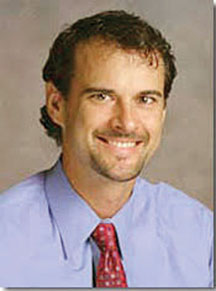Dr. Magryta: Keep moving
Published 12:00 am Sunday, May 19, 2019

Dr. Magryta
Movement
I often struggle with finding the sweet spot between preaching and teaching. I don’t like preaching, yet at times I feel as if these newsletters can feel preachy, especially when pointing out society’s failings for health. Leading by example is important, but it is not the only way. Verbal explanation of “the why” and “the outcome” coupled with motivational interviewing works well in a face to face clinic environment. How to translate that method to the written word is a bit of a different animal. How do you ask a reader to name what they will do for health without a dialogue? How do you hold someone accountable? The answer is that we cannot. The written word can and will always only be a starting point to learn from. The rest is up to you to make and continue a change behavior.
We just finished a few weeks on the topic of sleep. The antithesis of sleep is awake and active movement. I decided to write about this topic as I was struck today by the abject lack of motivation by hospital employees to use the stairs to go from one floor to the next. In my experience, the vast majority of Americans are using mechanical devices to move versus using their body. Whether it be a car, hover-board, elevator, escalator, motorized bicycle/scooter or other, we are moving less and losing physiologically in the process. As motorized choices evolved into place over time to speed up and refine life and work, we are likely long past the point of a useful benefit/loss ratio.
Children still far outdo their parents in the movement category, however, the advent of the ever enticing 24/7 screen use capabilities coupled with motorized devices is putting monster negative downward pressures on movement. I remember my teenage years being partially defined by riding my bicycle every morning delivering the local newspaper to over a hundred customers before school started. There was a lot of movement, daily.
We did not have the constancy of screen distraction in our hands all day or active motion devices to supplant walking. Tough and unfair times for our children now.
Who cares? Why does this matter?
Simply, axial loading occurs when your muscles move and your body with gravity’s help feels pressure in the bones. Specialized mechanoreceptors recognize the movement and encourage our bones to proliferate and remain strong. Immobilizing a human on a gurney for weeks will have the opposite effect by weakening the bones through calcium loss causing osteopenia or worse osteoporosis.
The natural process of bone development is very complicated, with many hormones and micronutrients necessary for optimal function. The vast majority of human bone development occurs in childhood and early adulthood. Therefore, it is critical that children and teens move often to lay down as much bone as possible.
What about muscle and bone stimulation with strength training and the associated movement like walking or running up stairs at work? Strength training your muscles increases the GLUT4 receptor, glucose transporter, in skeletal muscle thereby inducing enhanced insulin function and glucose uptake in muscle that will improve future muscle related function in sport and activity. This also has an effect of effectively utilizing glucose for function as opposed to persistently circulating in the blood stream which can cause inflammation and immune shifts. (Holten et. al. 2004)(Abel et. al. 2001)
I previously wrote about a fabulous
Time Magazine article from 2016 where Mandy Oaklander explored the effects of exercise on human disease. She discussed the profound mammalian research of Dr. Mark Tarnopolsky. His lab published a 2011
study in
PNAS that outlined the effects of exercise on a group of mice that are genetically set up to age rapidly. Reread this data set. It is excellent and worth your time.
On the next occasion that you and your children are faced with a set of stairs or an elevator, take the stairs.
.
About Post Lifestyles
Visit us on Facebook: https://www.facebook.com/SalPostLifestyle/ and Twitter @postlifestlyes for more content
 More by Post
More by Post



